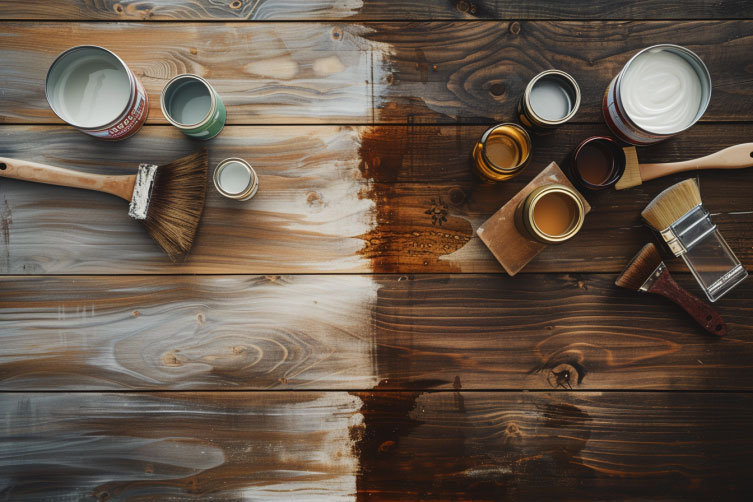Like a carpenter meticulously selecting the right tool for a job, choosing the right safety gear for your woodworking projects can make all the difference in ensuring your safety.
You wouldn’t operate a saw without checking its blade, so why would you neglect wearing the appropriate protective equipment?
From the essential first aid supplies ready to tackle any minor mishaps to the specialized gear designed to shield you from the insidious threats of sawdust and loud noises, there’s a whole arsenal waiting to be explored.
Let’s embark on a journey to uncover the top safety gear you should never work without, understanding how each piece fortifies your defense against potential workshop hazards.
Contents
Essential First Aid Supplies
In carpentry, having a well-stocked first aid kit with essentials like bandages, gauze, and antibacterial ointment is non-negotiable for promptly addressing injuries. Your safety and the safety of others in your woodworking environment depend on your preparedness.
Including tools like tweezers, alcohol spray, cold compression bags, and exam gloves in your first aid kit is vital. These additions aren’t just about treating injuries; they’re about ensuring a rapid and effective response to any mishaps in your carpentry workshop.
You must familiarize yourself with the contents of your first aid kit and their usage. Quick access to these essential supplies in your workshop significantly enhances safety and ensures you’re equipped to handle emergencies efficiently.
Remember, in the realm of woodworking and working with equipment, your first aid kit is an indispensable piece of Personal Protective Equipment.
Respiratory Protection Gear
Understanding the significance of respiratory protection gear, such as N95 masks or respirators, is crucial when engaging in carpentry tasks to safeguard your lungs from harmful dust particles and chemicals.
Woodworking activities release fine wood dust, posing risks of allergies, asthma, or lung diseases. OSHA recommendations highlight the use of respiratory protection to mitigate these hazards.
Without proper gear like dust masks or quality respirators with NIOSH N95 filters, prolonged exposure can lead to respiratory irritation and coughing. It’s vital to equip yourself with the right woodworking safety equipment to prevent health complications.
Ensuring your respiratory protection meets these standards will significantly reduce the risk of inhaling dangerous substances, making your woodworking environment safer and healthier.
Hearing Safety Devices

Just as protecting your lungs from harmful dust is critical, so too is shielding your ears from the high decibel levels produced by carpentry equipment.
Power tools in carpentry workshops generate loud noises that can lead to hearing damage over time. Therefore, incorporating safety gear specifically designed for hearing protection is non-negotiable.
- Earplugs: Simple, yet effective, they fit directly into the ear canal, offering protection from the most extreme noises.
- Ear Muffs: These cover the entire ear and are ideal for prolonged exposure to loud environments.
- Noise-Canceling Headphones: For those who prefer a high-tech solution, these can often play music while dampening external sound.
- Custom-Fit Ear Protection: For the utmost comfort and protection, consider investing in earplugs or muffs tailored to your ears.
Eye Protection Essentials
Shielding your eyes with proper safety glasses is a fundamental step in any carpentry project, protecting against the pervasive risks of sawdust and debris. While working with power tools, the clouds of sawdust and wooden debris can pose significant risks to your eyes without proper protection. Regular use of safety glasses is essential to prevent eye injuries, ensuring your woodworking safety.
| Feature | Benefit | Key for Carpentry |
|---|---|---|
| Scratch Resistance | Maintains clarity | Power tools |
| UV Protection | Shields from ultraviolet rays | Outdoor work |
| Wraparound Lenses | Comprehensive coverage | DUST and debris |
| Durability | Withstands impacts | Sharp edges |
| Comfort | Encourages regular use | Eye protection |
Adopting glasses with these features secures your vision against eye injuries, making them indispensable in your safety gear.
Protective Clothing and Accessories

After ensuring your eyes are well-protected, it’s crucial to consider the rest of your body by selecting the appropriate protective clothing and accessories for safe carpentry work. Beyond safety goggles, which shield your eyes from dust and debris, consider these essential items:
- Cut-resistant gloves: Protect your hands from splinters and cuts.
- Steel toe boots: Safeguard your feet from falling objects and sharp wood pieces.
- Face shields: Offer additional protection against flying wood chips and tool hazards.
- Work aprons: Keep your clothing free from spills and debris.
These items, along with the use of dust masks, push sticks for safely guiding wood through saws, and devices for noise reduction, form a comprehensive safety attire. Remember, investing in quality protective gear is investing in your safety and well-being during carpentry work.
Conclusion
In summary, when you’re tackling carpentry tasks, prioritizing your safety is paramount. Always have a stocked first aid kit at hand for emergencies.
Don’t skimp on respiratory protection; RZ masks are a top choice for keeping harmful dust at bay. Protect your hearing with noise-reducing earmuffs and shield your eyes with safety goggles or glasses.
Remember, cut-resistant gloves, steel-toe boots, and safety aprons are essential. Investing in the right safety gear minimizes injury risks, ensuring you work smarter and safer.






